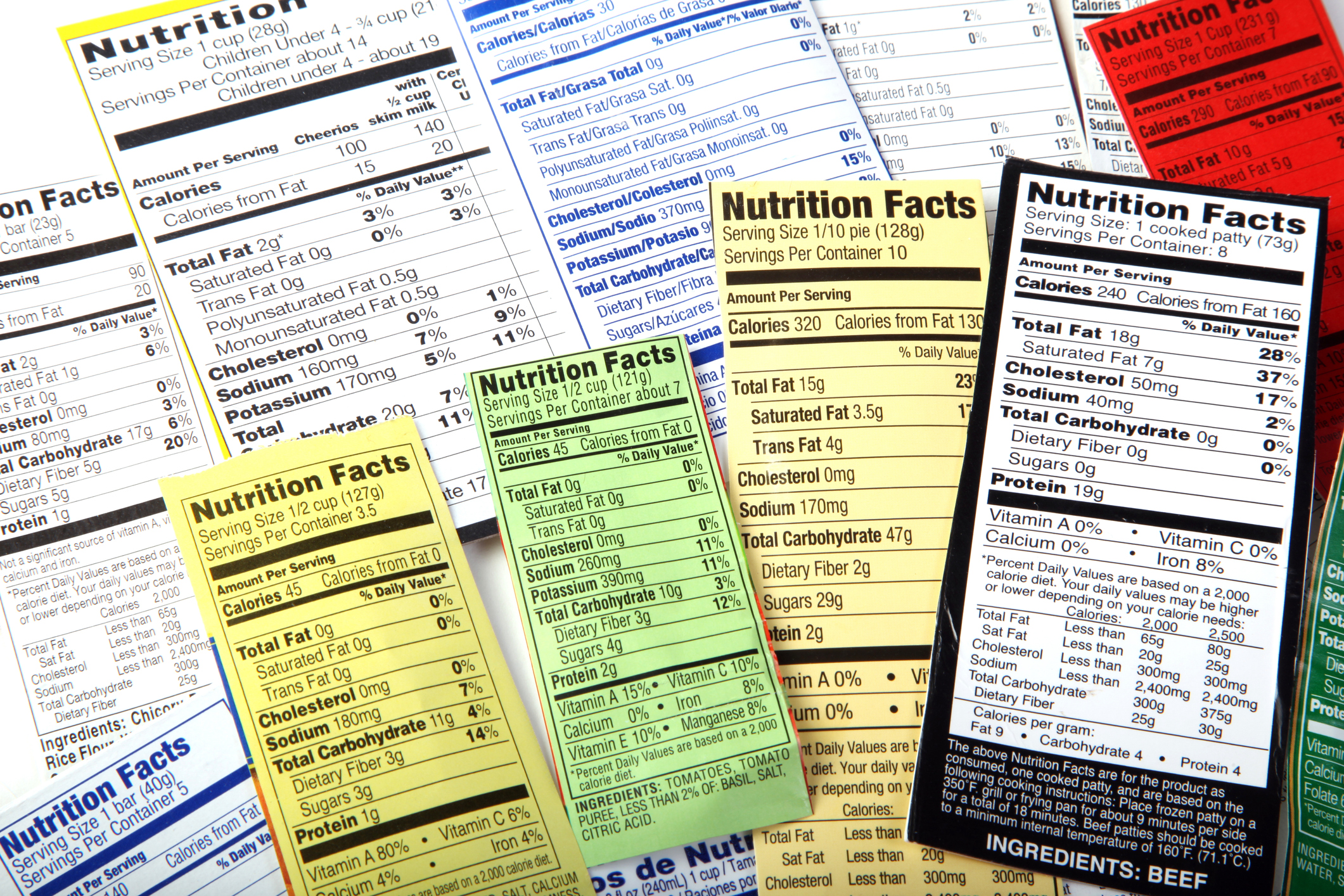
The tech industry has a new trend: adopting “transparency labels” modeled after the iconic Nutrition Facts panel found on food packaging. In 2020, Apple introduced “Privacy Labels” aimed at disclosing how apps handle user data. And that was just the beginning. Starting on April 10, the FCC is requiring internet service providers to feature “Broadband Facts” labels detailing pricing, speeds, and data caps. Meanwhile, some policymakers and industry analysts have called for an “AI Nutrition Facts” label to clarify how artificial intelligence systems create content.
This rush to emulate the Nutrition Facts panel underscores the label’s status as the go-to model for consumer transparency. Yet, the history of how it achieved that status reveals the power — and the limitations — of using such labels as a regulatory tool. They can inform consumers, but they may also forestall more serious regulation that is necessary to adequately safeguard the public interest.
In the 1950s and 1960s, the Food and Drug Administration (FDA) debated the proper way to safeguard consumers from misinformation and fearmongering in health food markets. Initially, officials resisted nutrition labeling on food, seeing it as unnecessary “quackery” or the purview of medical specialists treating the ill.
But increasingly, the FDA had to weigh the growing legitimate medical interest in using diet as a preventative solution to public health, as well as the rise of a new self-improvement culture that made Americans more health conscious. FDA officials were also cognizant of declining public trust in the government’s ability to make decisions for consumers about their private lives after years of scandals. This shifted officials’ thinking and they began to accept that Americans had the right — and perhaps even the need — to seek out health information for food. They saw informative labels as empowering consumers to make choices for themselves, based on their own lifestyle, without FDA paternalism.
This new approach led to the 1973 introduction of a “Nutrition Information” panel to incentivize the food industry to make healthier packaged options. Adding the label was only voluntary, but if companies wanted to actively promote a heath claim or a food’s nutrients they had to include it to balance out their promotional statements.
Read More: OpenAI CEO Sam Altman Asks Congress to Regulate AI
While garnering some media fanfare, the nutrition information panel’s bland design lacked visual impact. If anything, it arguably did more harm than good, because it cleared the path for food companies to hype their products with dubious claims about health benefits. They focused on nutrition, while obscuring other information that might be vital for consumers to make educated decisions, like where a food came from or whether it was processed.
This trend intensified throughout the 1970s and 1980s as food companies buried consumers in hard to decipher nutrition information. By 1989, U. S. Secretary of Health and Human Services Louis W. Sullivan was forced to admit that “consumers need to be linguists, scientists, and mind readers to understand many of the labels they see.”
The confusing labels prompted growing calls for the FDA to update nutrition labeling rules. In 1990, Congress passed the Nutrition Labeling and Education Act, which finally mandated that the FDA design a uniform nutrition label for all packaged foods. Over three years, the agency conducted extensive consumer research and stakeholder outreach with both the food industry and relevant consumer and health interest groups.
Unlike in 1973, this time, officials focused on the label’s design as well. They hired Greenfield Belser Ltd., a firm that specialized in legal branding headed by graphic designer Burkey Belser. According to Belser, FDA Commissioner David Kessler asked for his firm’s help out of fear that the new label wouldn’t “look any different” and no one would “know we’ve even done anything.”
Belser, working with colleagues and policy experts, began to reformat the layout and visual elements of the label giving form to its now-iconic design. They introduced indented subgroups and hairlines for readability. They used Helvetica font because it was widely available, but also because it was easy to read. Most importantly, they gave the panel a boldfaced title, “Nutrition Facts,” as well as black and white text, and they put a one-point rule around the label. All of these moves aimed at clearly identifying the label as a distinct element of the food packaging.
In an interview, Belser argued that the black box around the label signaled “manufacturers could not encroach on public property.” The boldface title helped transform Nutrition Facts into a “government brand.” Indeed, only a few years later the FDA hired Belser to “extend the brand” and create a similar “Drug Facts” label for drug packaging.
The FDA launched a multi-million dollar PR blitz to introduce the nutrition label. It included TV ads featuring celebrities — like baseball star Roger Clemens and children’s favorite animated monkey, Curious George — educational materials distributed nationwide to schools and doctor’s offices, and appearances on TV talk shows by the FDA's leadership. They touted the label’s ability to help Americans make healthier choices, live longer and better lives, and thereby lower health-care costs.
The label proved to be an immediate hit with consumers and critics alike. By 1996, design critic Massimo Vignelli was celebrating it as a triumph of socially responsible “information architecture” that perfectly married form and function. Its clean layout of objective information contrasted with the ostentation and flash of colorful, biased food advertising.
The label seemed to be a perfect solution. It enabled policymakers to nudge consumers and businesses toward achieving goals instead of enacting what legal scholar Cass Sunstein — a fan of this new approach — labeled rigid “command and control” measures. The public and media lauded its simplicity and clarity, and food makers scrambled to reformulate products to improve nutrient profiles.
Yet over the last 30 years, America’s public health crisis has only deepened as obesity, heart disease, and other diet-linked illnesses have continued rising unchecked. While well-intentioned, the Nutrition Facts label proved no panacea.
One issue was a resurgence of commercial messaging that distorted nutrition facts through clever marketing. As the public education campaign tied to the new label came to an end, promotional health claims from food companies about nutrition information filled the void, easily eclipsing public health messages. The clearest example of this was front-of-package labeling manufacturers and retailers developed to highlight specific nutrient facts for a product, often taking them out of context to make a food look healthier than it was.
Read More: How Nutrition Education for Doctors Is Evolving
Plagued by common biases — most notably the tendency to keep purchasing the same food product unaware that it has changed or become less healthy — consumers also struggled to interpret labels holistically to create a balanced diet amid a sea of information. Moreover, framing dietary health as an individualized “choice” ignored deeper barriers to healthy eating like “food deserts” where getting fresh fruits and vegetables was impossible or the constraints poverty placed on people’s food choices. For all its design prowess, Nutrition Facts embraced an ideology of consumer empowerment ill-equipped to address systemic disadvantages.
Ultimately, the label’s greatest impact may have been catalyzing food companies to reduce unhealthy nutrients, like saturated fats and sodium, and boost healthier ones, like fiber and protein, spurred by consumer scrutiny. But this had little to do with the knowledge deficit the label was invented to solve, and often manufacturers simply replaced one unhealthy ingredient with another.
This mixed legacy offers lessons as policymakers now consider transparency fixes for technologies like AI, online privacy, and broadband.
Simple design and accessible information disclosures have undeniable value and political appeal. They can catalyze industry accountability and create a pressure to incorporate public values into marketplace options. However, labels alone are not enough to solve complex social issues. Their individualistic “empowerment” ethic ignores socioeconomic barriers to access. And their “intuitive” design often glosses over complex contextual nuances.

Most critically, there is a real danger that informational disclosure risks preempting deeper, tougher regulations that might be warranted. As media scholar Michael Schudson has observed, “it affords government the least invasive action possible on some social problem.”
But before choosing that option, policymakers need to assess whether such labeling is capable of resolving core public concerns — from algorithmic bias to data commodification to affordable internet access. If not, stronger regulatory oversight may be required, with labeling playing an educational support role rather than being a standalone solution.
Arming consumers with education simply cannot substitute for asking whether certain industry practices should be permitted in the first place. That’s the lesson of our most iconic informational label.
Xaq Frohlich is associate professor of history of technology at Auburn University and author of From Label to Table: Regulating Food in America in the Information Age.
Made by History takes readers beyond the headlines with articles written and edited by professional historians. Learn more about Made by History at TIME here. Opinions expressed do not necessarily reflect the views of TIME editors.
More Must-Reads from TIME
- Cybersecurity Experts Are Sounding the Alarm on DOGE
- Meet the 2025 Women of the Year
- The Harsh Truth About Disability Inclusion
- Why Do More Young Adults Have Cancer?
- Colman Domingo Leads With Radical Love
- How to Get Better at Doing Things Alone
- Michelle Zauner Stares Down the Darkness
Write to Xaq Frohlich / Made by History at madebyhistory@time.com
